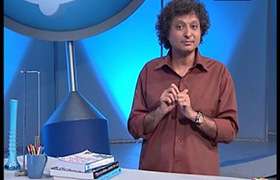CBSE Class 9 Answered
Calculate the work done.
Asked by Nishant | 19 Oct, 2013, 07:15: PM
The boy first moves a distance of 1.5 km against the force of friction.
Hence, work done to cover this distance is
W1 = Fs = 5 × 1500 = 7500 J
Now, the boy moves along a circle of radius 100 m for one and a half cycle.
For one complete cycle, displacement is zero and hence the work done will be zero. Thus, the boy will do work for remaining half cycle only. That is,
W2 = 5 × 3.14 × 100 = 1570 J
Finally the boy moves forward for 2 km.
Hence, work done is
W3 = 5 × 2000 = 10000 J
Thus, the total work done by the boy is
W = W1 + W2 + W3 = 7500 + 1570 + 10000 = 19,070 J
Answered by Romal Bhansali | 21 Oct, 2013, 10:06: AM
Application Videos
Concept Videos
CBSE 9 - Physics
Asked by mailtoparvathyprajith | 08 Feb, 2024, 06:45: PM
CBSE 9 - Physics
Asked by mailtoparvathyprajith | 08 Feb, 2024, 12:32: PM
CBSE 9 - Physics
Asked by mailtoparvathyprajith | 06 Feb, 2024, 09:00: PM
CBSE 9 - Physics
Asked by mailtoparvathyprajith | 06 Feb, 2024, 08:44: PM
CBSE 9 - Physics
Asked by mailtoparvathyprajith | 06 Feb, 2024, 08:24: PM
CBSE 9 - Physics
Asked by sadhanaasadhanaa67 | 04 Feb, 2024, 12:27: PM
CBSE 9 - Physics
Asked by vkjainj56 | 30 Nov, 2023, 12:00: AM
CBSE 9 - Physics
Asked by mattooamit4u | 28 Nov, 2023, 12:36: PM
CBSE 9 - Physics
Asked by deadloxyt15 | 10 Oct, 2023, 01:04: PM
CBSE 9 - Physics
Asked by palagarapapamma1982 | 26 Sep, 2023, 08:50: PM












